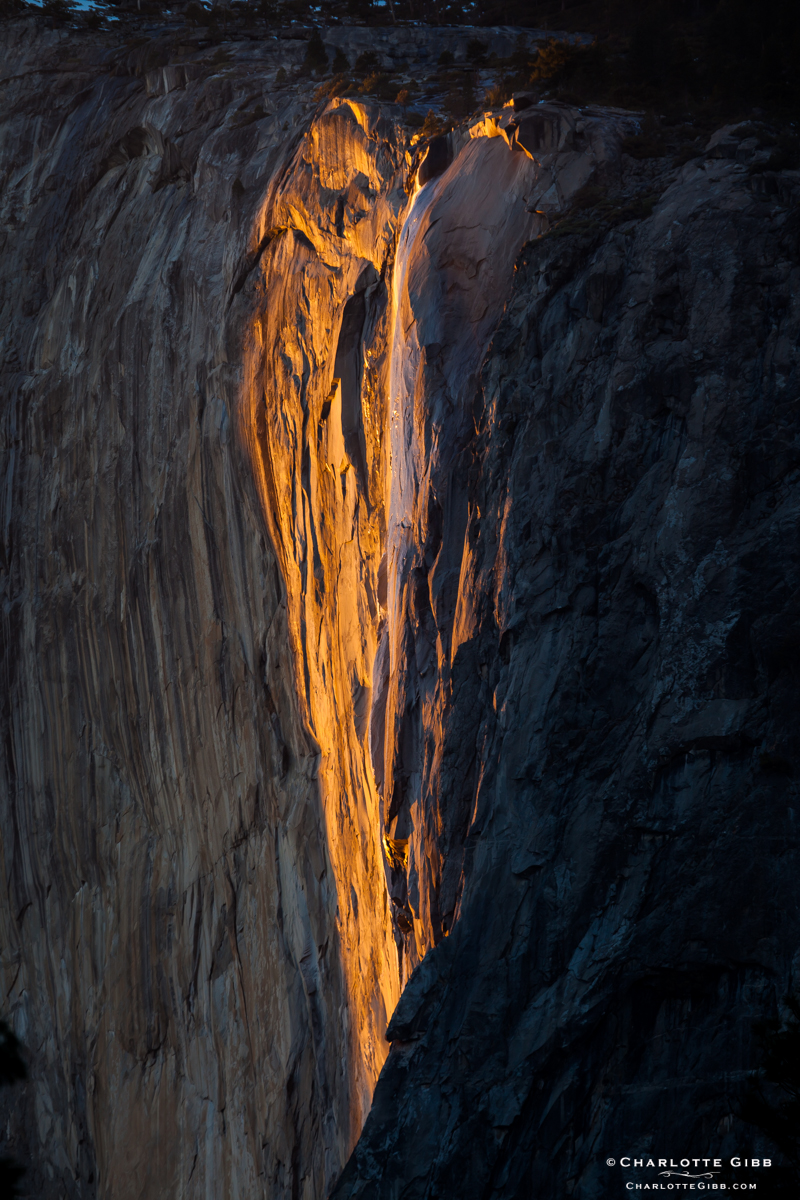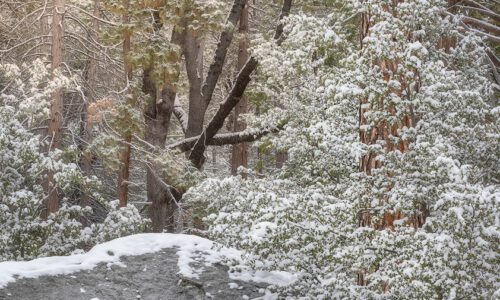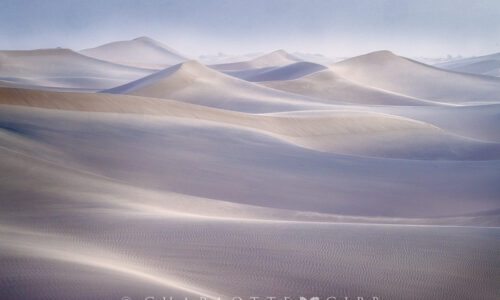
Horsetail Falls in Yosemite Valley

I am blessed to live fairly close to my favorite National Park, Yosemite, and I manage to get up there fairly often to shoot, climb and hike. This year, I added skiing and ice-skating to the list of things that give me yet another excuse to go there, not that I need one.
There is a phenomenon that draws photographers from all over the country for just a few days late in the month of February. Light from the setting sun illuminates Horsetail Falls as it cascades over the edge of El Capitan and it provides a beautiful natural spectacle, making the falls look like molten lava. But the conditions have to be just so. The area at the top of the falls that contains the snow that melts and feeds the falls has to be substantial enough to provide good flow. And the temperature has to be warm enough to melt the snow in the first place. And the sun cannot be obscured by clouds right at the moment of sunset. And because it is particularly challenging, photographers flock to it every year, crowding the few places that actually give you a clear shot of the falls.
Galen Rowell first photographed the phenomenon in 1973, but years would go by before it would become the draw that it is now. I decided to attempt to shoot Horsetail Falls this year. I was there — perhaps a bit early for the most ideal light conditions — and it was just too tempting to turn away, even though every photographer within 20 square miles of the place had their cameras pointed to that spot. I just wanted to see it with my own eyes.
As expected, there were a slew of people vying for the best vantage points to shoot the falls. Many of the photographers had been there for hours, and some had been coming for days already, getting skunked out by clouds all week. I showed up a mere hour before sunset. The vibe was one of camaraderie— everyone sharing their ideas for getting the best shot. Which lens is they planned to use. How they planned to compose the shot. Is the water starting to freeze? Why yes, I think it is! But as soon as the magic light began to illuminate the cliff, the chatter stopped and all you could hear was the clicking of dozens of shutters.
And despite the fact that we were all there, shooting the exact same subject, everyone had a little different vision about what they were trying to achieve. When I look at the image that I managed to capture, I see an angel frozen in the rock face, the setting sun illuminating her outstretched wings so that she looks lit from within — not frozen, but on fire.
charlottegibb
Charlotte Gibb is a contemporary fine art photographer based in the San Francisco Bay Area specializing in landscapes of the Western United States. Her images are often taken in familiar places for the well-versed landscape photographer, but she prides herself on her keen eye toward the subtle and sometimes overlooked beauty of the natural world. Growing up among the beautiful mountains of Northern California, she considers herself a student of life, learning about people, nature, music, and photography along the way. But always, her life-long passion for the wilderness shines through it all. Charlotte earned her Bachelor of Arts degree from the Academy of Art University in San Francisco and has exhibited her work in several solo shows throughout California. Her darkroom, long gone now, has been replaced with digital darkroom tools, and her style has evolved from a somewhat journalistic approach, to one that pays tribute to the natural world.



